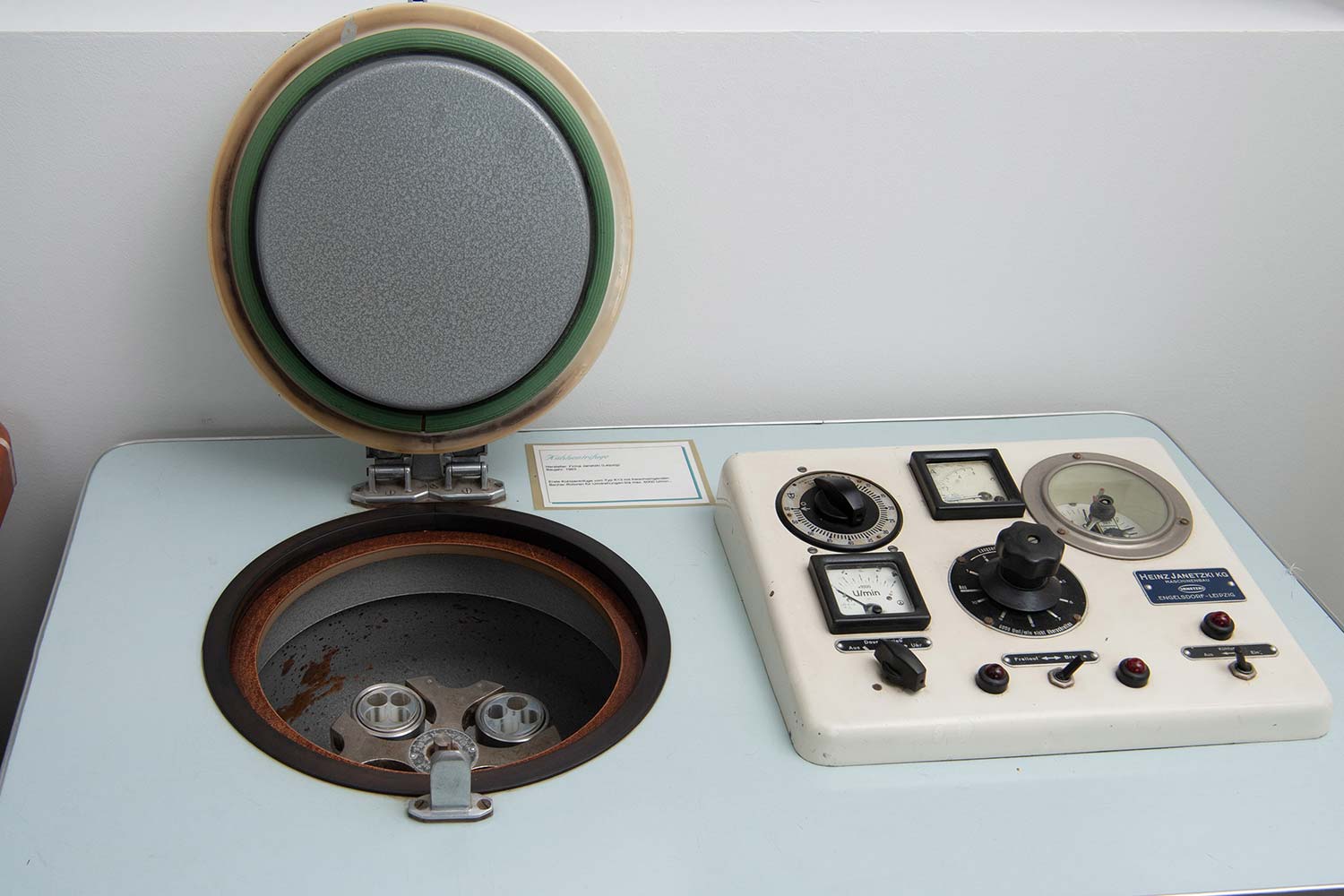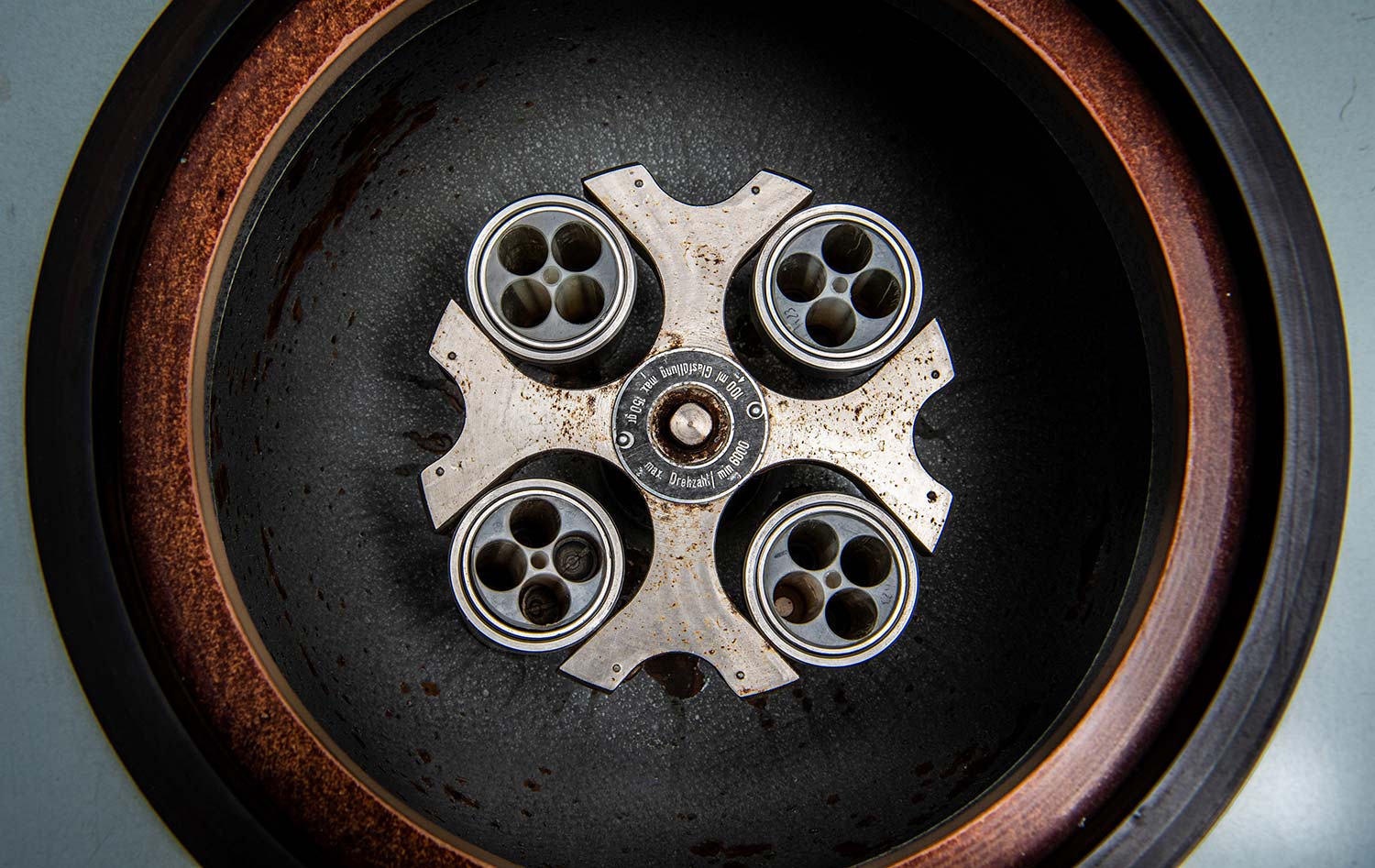11Type 13 refrigerated centrifuge
1963

A centrifuge is a device used to separate mixtures of substances into their individual components. It exploits mass inertia by whirling containers with mixtures of substances in a uniform circular motion. The greater inertia of substances with a higher density cause them to migrate outwards due to the centrifugal force: they will be at the bottom of the containers after centrifugation. Components with lower densities are displaced proportionally, and reach the center through the circular movement. This means they collect at the upper end of the container after centrifugation.
One simple case where this is used is to centrifuge a blood sample to separate the denser blood cells from blood plasma, which is less dense. The benchtop centrifuge from the Heinz Janetzki company exhibited here in the museum is sufficient for such simple applications.
In comparison, a refrigerated centrifuge offers two innovations and advantages. On the one hand, it can reach higher speeds. This means it generates higher centrifugal forces and can thus separate components whose densities differ only slightly. This is crucial for biochemical and molecular biological questions because the differences in the density of proteins, for example, are smaller than those of cells and liquids, such as blood samples. The second innovation, as the name suggests, is the combination of a centrifuge with a refrigeration unit. This is also crucial for biochemical and molecular biological applications, since components with small differences in density have to be centrifuged for a correspondingly long time to reliably separate them. The cooling unit ensures that this happens at a constant temperature. Refrigerated centrifuges are still used today in blood banks, clinics, and biomedical research facilities.
